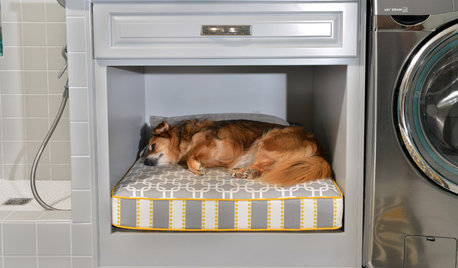Growing paw paw from seed questions
curtis
9 years ago
Related Stories

CONTAINER GARDENS8 Easy Container Plants to Grow From Seed
Get beautiful blooms and herbs in summer by starting these choice garden picks from seed in spring
Full Story
GARDENING GUIDESGreat Design Plant: Red Kangaroo Paw
Plant this dramatic perennial in fall or spring for its height, hardiness and beautiful red blooms
Full Story
GARDENING GUIDESHow to Plant a New Lawn From Seed
Choose from more grass varieties and save money over sod by starting your lawn from seed
Full Story
SUMMER FRUITS AND VEGETABLESHow to Grow Your Own Fresh, Sweet Corn
Here's how to plant and care for your own mini cornfield
Full Story
GARDENING GUIDESSeeds or Seedlings? How to Get Your Garden Started
Growing delicious herbs and vegetables starts with knowing your goals and when you want to plant
Full Story
ORGANIZINGPre-Storage Checklist: 10 Questions to Ask Yourself Before You Store
Wait, stop. Do you really need to keep that item you’re about to put into storage?
Full Story
MOST POPULARSummer Crops: How to Grow Sunflowers
Savor snack-tastic sunflower seeds once the radiant blooms have faded — if the birds have saved you any, that is
Full Story
EDIBLE GARDENSHow to Grow 10 Favorite Fruit Trees at Home
Plant a mini orchard in fall, winter or early spring to enjoy fresh-off-the-tree fruit the following year
Full Story
EDIBLE GARDENSSummer Crops: How to Grow Tomatoes
Plant tomato seedlings in spring for one of the best tastes of summer, fresh from your backyard
Full Story
PETSRoom of the Day: Laundry Room Goes to the Dogs
Muddy paws are no problem in this new multipurpose room
Full StoryMore Discussions







Bradybb WA-Zone8
copingwithclay
Related Professionals
Fillmore Landscape Architects & Landscape Designers · Rancho Palos Verdes Landscape Architects & Landscape Designers · Davis Landscape Contractors · Edinburg Landscape Contractors · Fort Myers Landscape Contractors · Fountain Valley Landscape Contractors · La Vista Landscape Contractors · Manhattan Landscape Contractors · North Potomac Landscape Contractors · Overland Park Landscape Contractors · Ramsey Landscape Contractors · Rancho Santa Margarita Landscape Contractors · Winchester Landscape Contractors · Oxon Hill Landscape Contractors · Palos Heights Landscape Contractorslucky_p
alexander3_gw
Charlie
Greg
gonebananas_gw
lucky_p
garymc
forestandfarm
clarkinks
thecityman, Zone 7a/6b near Nashville
forestandfarm
Bradybb WA-Zone8
thecityman, Zone 7a/6b near Nashville
forestandfarm
curtisOriginal Author
thecityman, Zone 7a/6b near Nashville
thecityman, Zone 7a/6b near Nashville
Tony
thecityman, Zone 7a/6b near Nashville
milehighgirl
curtisOriginal Author
thecityman, Zone 7a/6b near Nashville